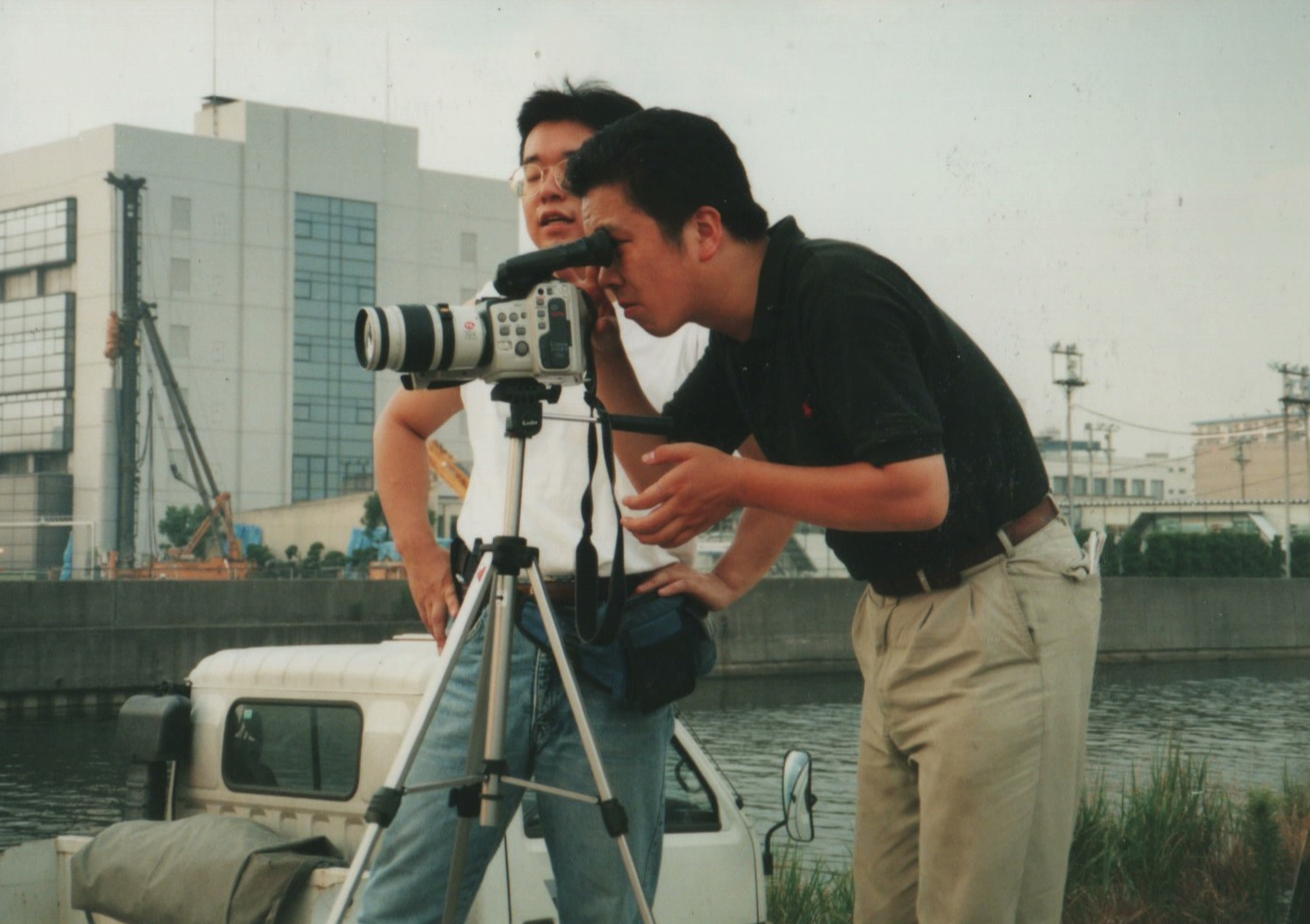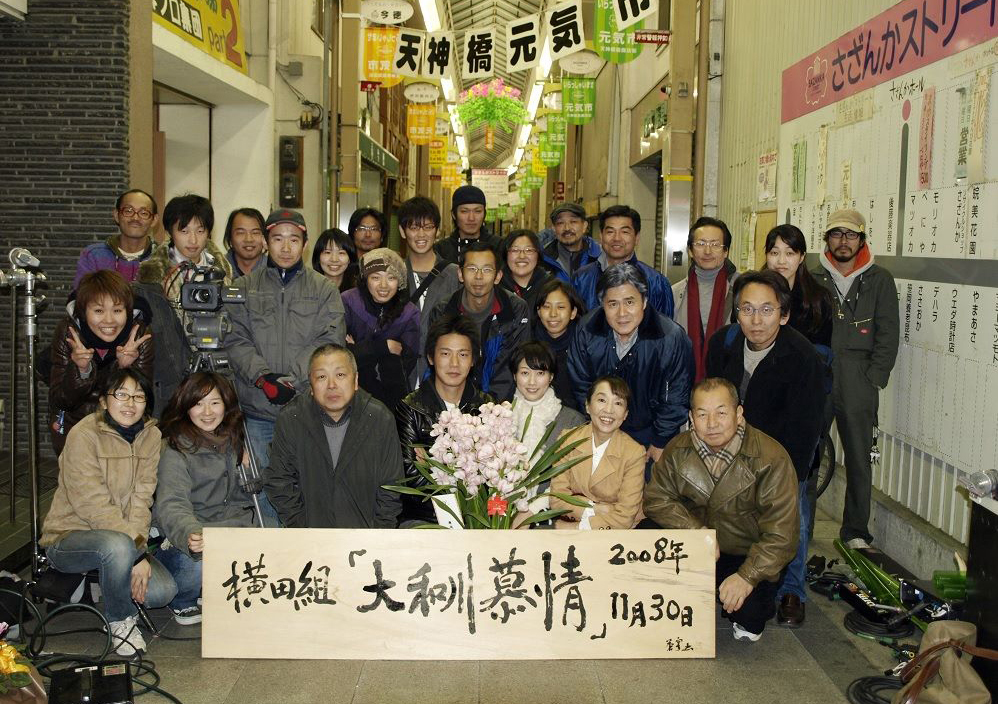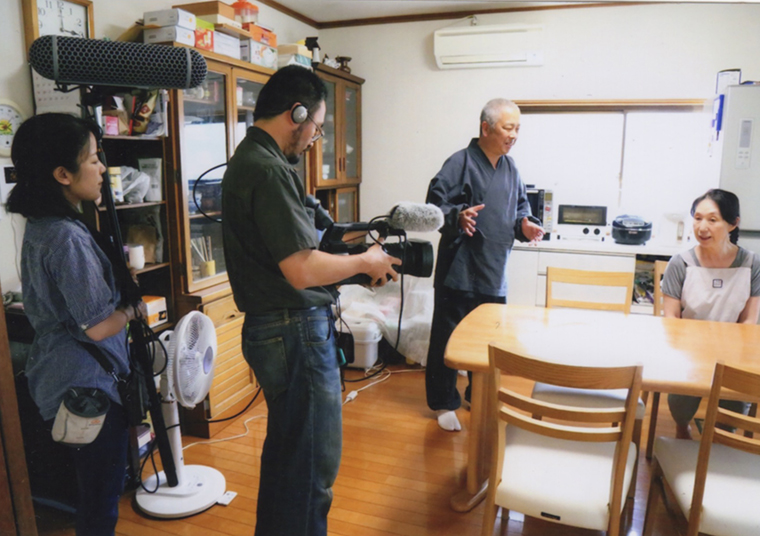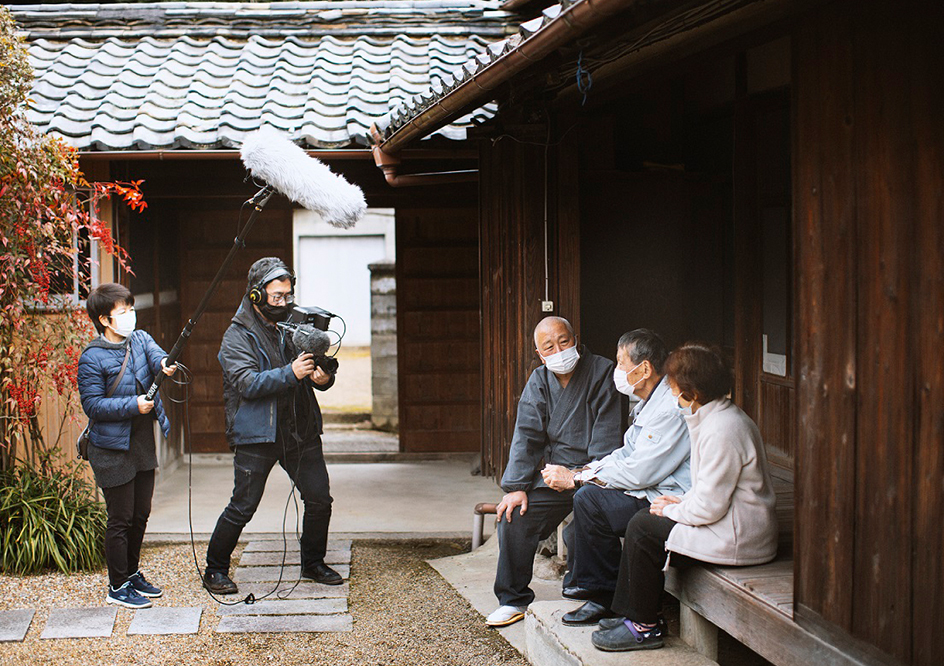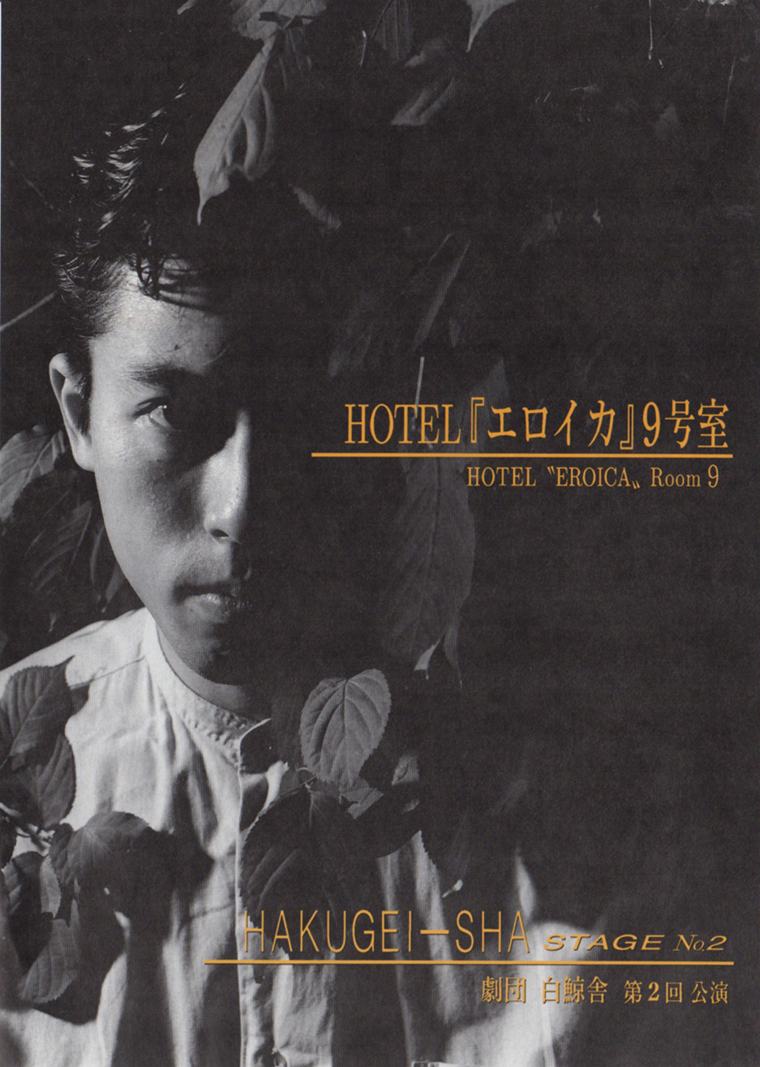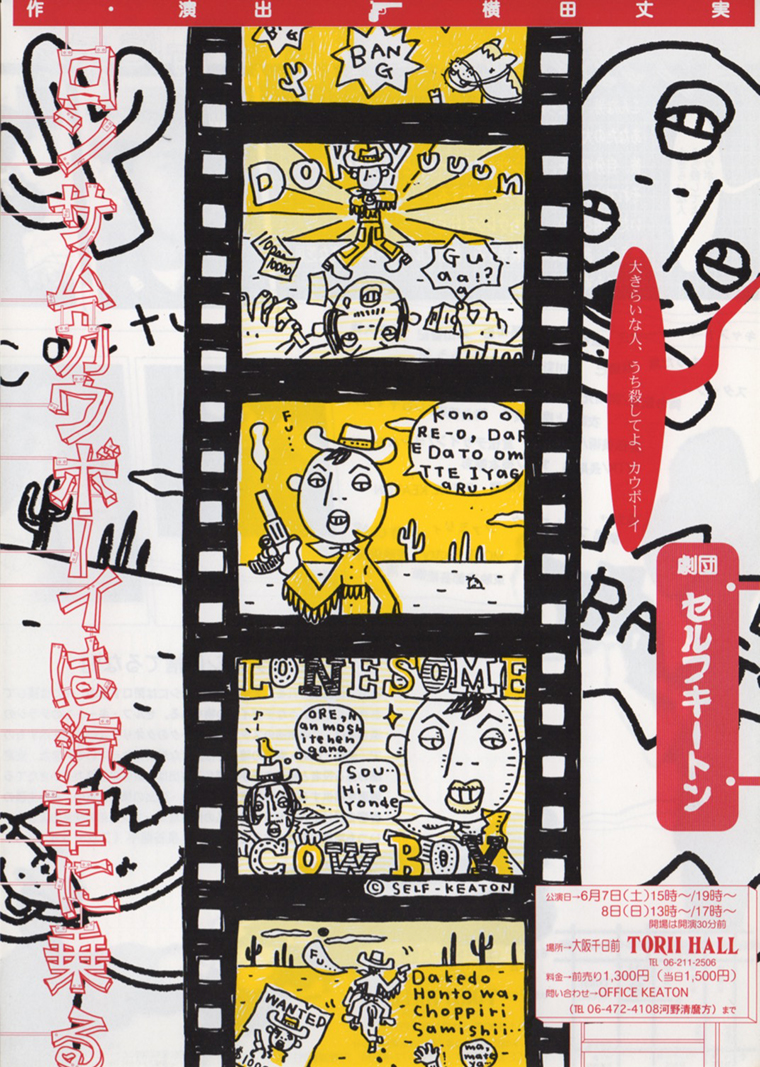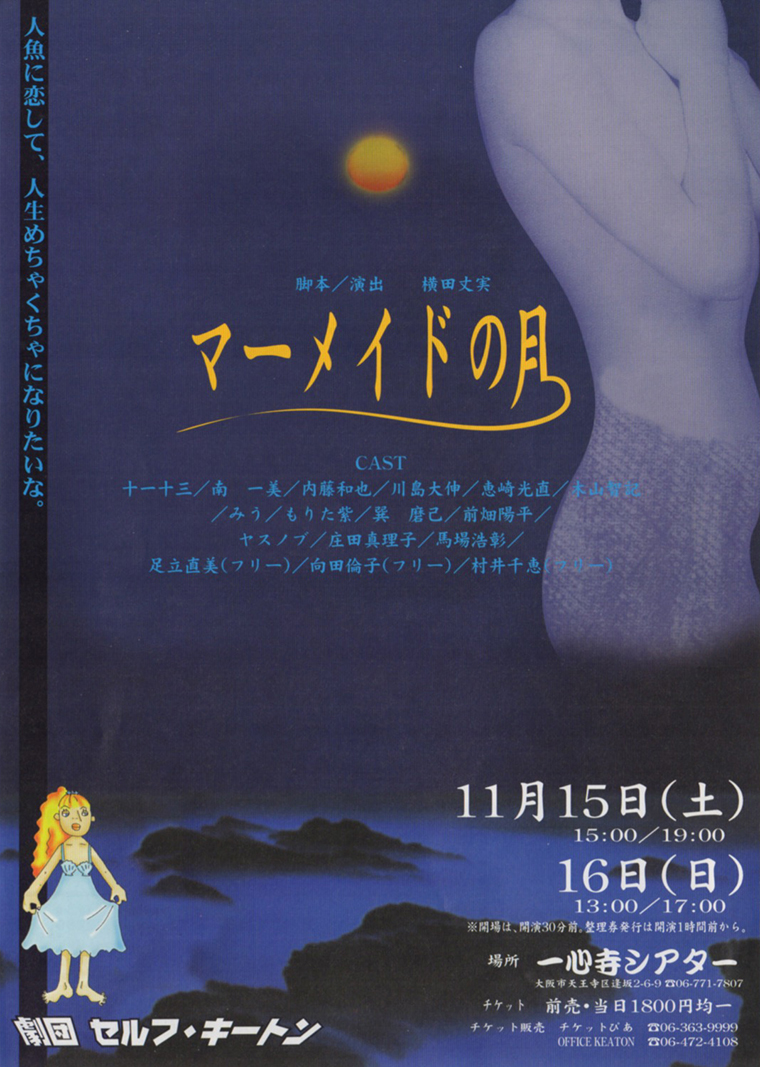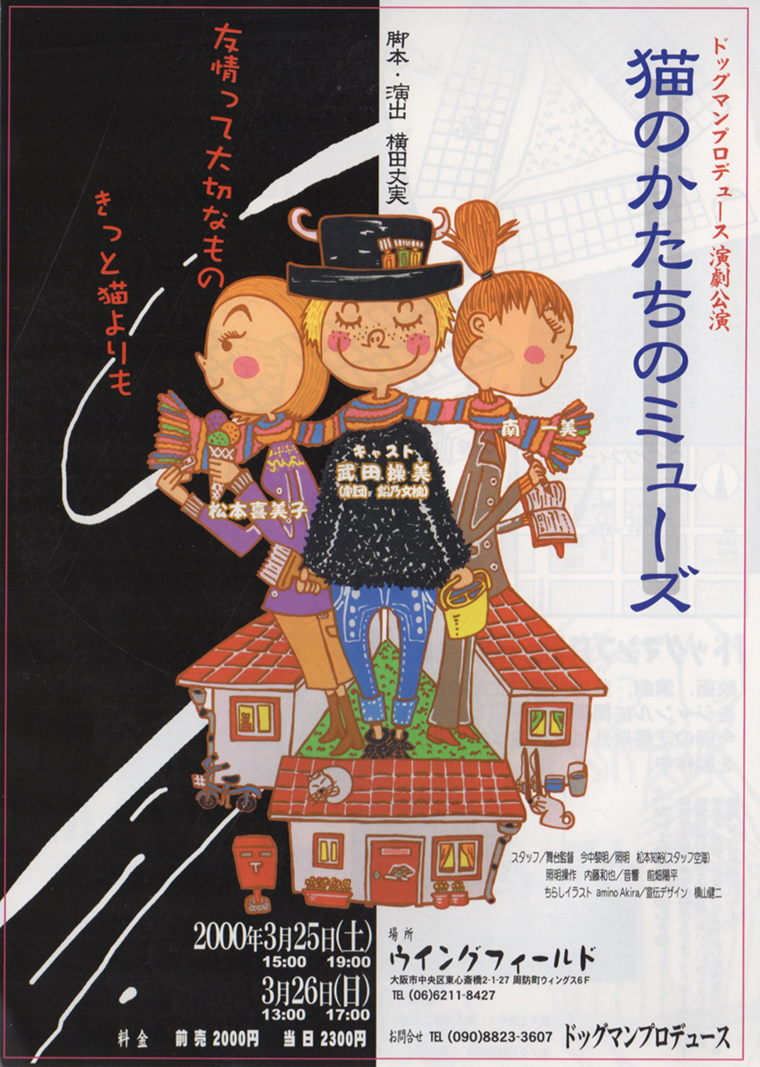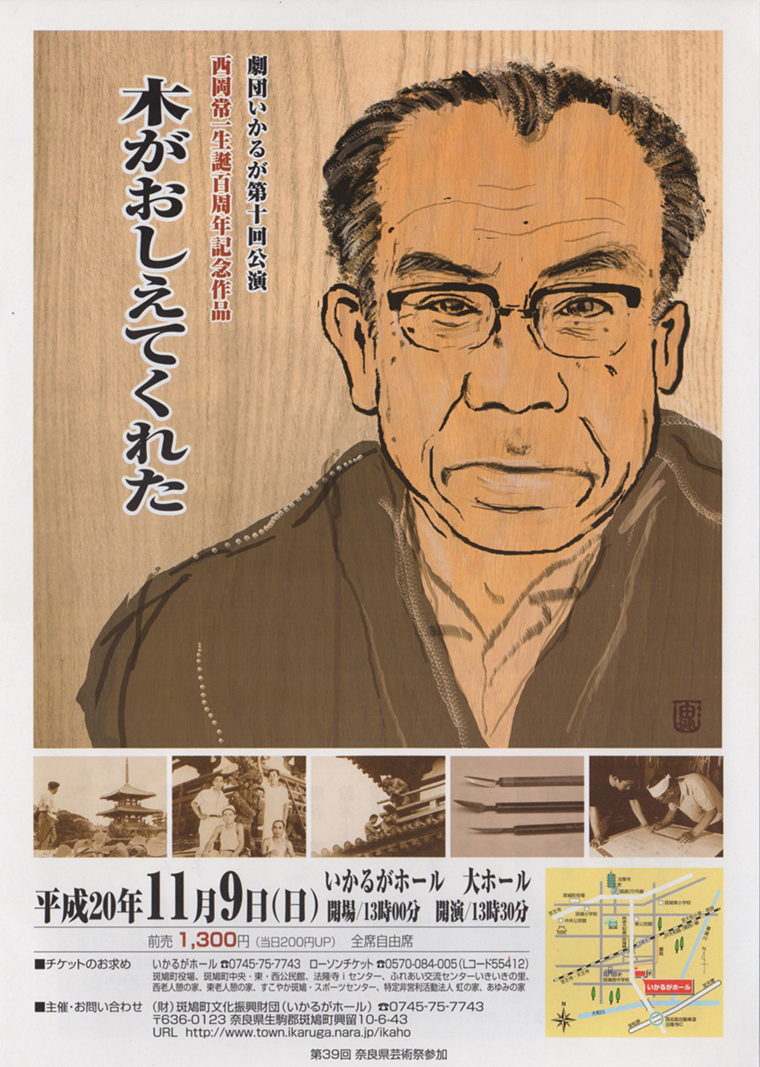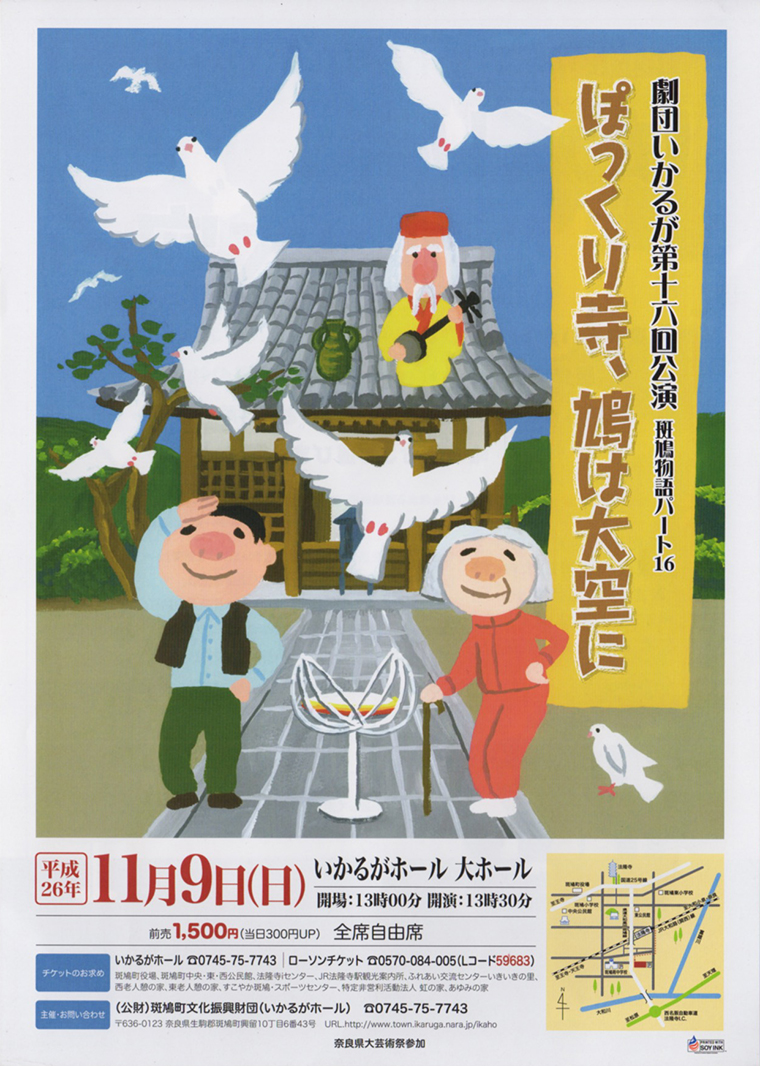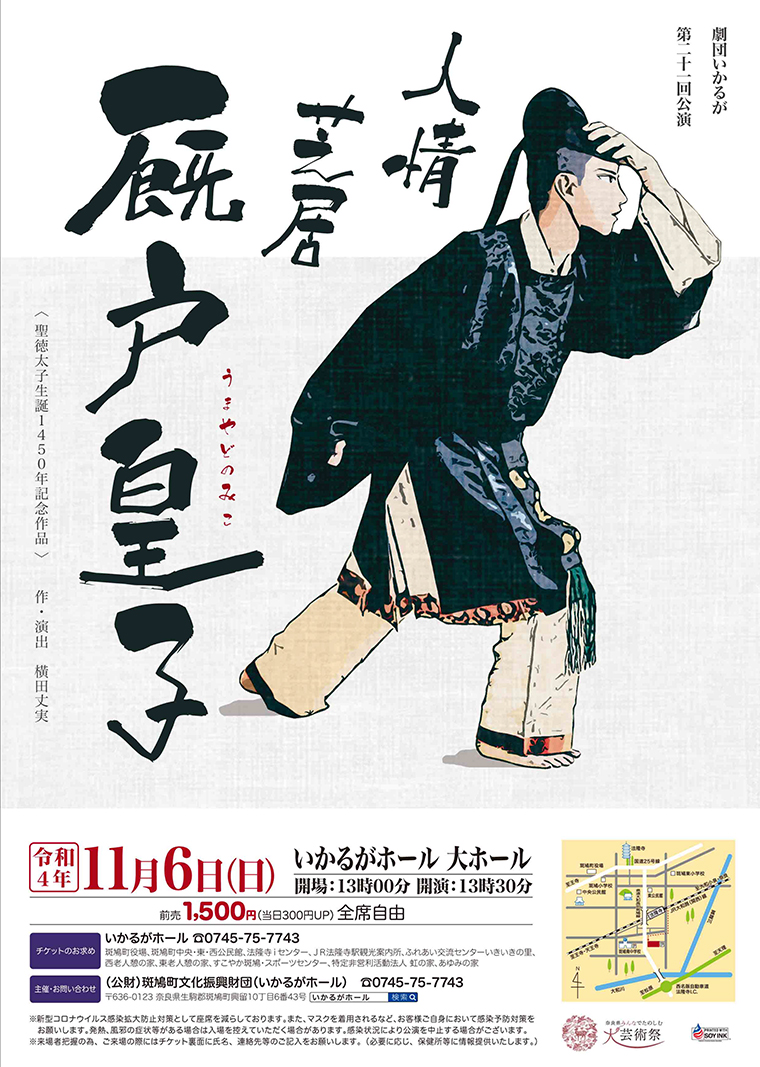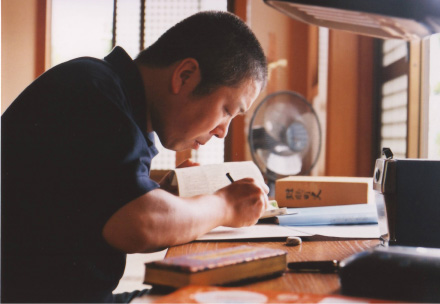
横田丈実 / 映画監督 / 僧侶
1966年奈良県斑鳩町に生まれる。実家は融通念佛宗の寺院「浄念寺」。
1985年龍谷大学文学部仏教学科に入学。映画研究部に在籍したのをきっかけに映画製作を開始。
「蝸牛庵の夜」(1992年)が「ぴあフィルムフェスティバル」に入選。
その後も奈良県斑鳩町にて僧侶の暮らしをしながらマイペースに作品を発表。
ふわふわと揺れる恋模様をモノクロ映像で綴った「FISHBOX 魚箱」(1999年)や、実在した人物を人々の噂話だけで浮かびあがらせる「極楽寺、燃えた」(1994年)など作風は多岐にわたる。 2006年にはタウン誌の呼びかけで製作された「あかりの里」を、2007年には「ろう劇団」との共同作業による「月光」を、2009年には大和高田市を舞台にした「大和川慕情」を監督。
近年は「加奈子のこと」(2013年)や「遺影、夏空に近く」(2017年)など、亡き人と遺された人のつながりを描く作品を発表している。
映画製作と同時に演劇活動も展開。2002年「劇団いかるが」の脚本・演出に就任。
以来「法隆寺」「正岡子規」 「西岡常一」など地元にゆかりのある題材をもとに毎年公演を行っている。
現在「浄念寺」住職を勤める。
1985年龍谷大学文学部仏教学科に入学。映画研究部に在籍したのをきっかけに映画製作を開始。
「蝸牛庵の夜」(1992年)が「ぴあフィルムフェスティバル」に入選。
その後も奈良県斑鳩町にて僧侶の暮らしをしながらマイペースに作品を発表。
ふわふわと揺れる恋模様をモノクロ映像で綴った「FISHBOX 魚箱」(1999年)や、実在した人物を人々の噂話だけで浮かびあがらせる「極楽寺、燃えた」(1994年)など作風は多岐にわたる。 2006年にはタウン誌の呼びかけで製作された「あかりの里」を、2007年には「ろう劇団」との共同作業による「月光」を、2009年には大和高田市を舞台にした「大和川慕情」を監督。
近年は「加奈子のこと」(2013年)や「遺影、夏空に近く」(2017年)など、亡き人と遺された人のつながりを描く作品を発表している。
映画製作と同時に演劇活動も展開。2002年「劇団いかるが」の脚本・演出に就任。
以来「法隆寺」「正岡子規」 「西岡常一」など地元にゆかりのある題材をもとに毎年公演を行っている。
現在「浄念寺」住職を勤める。
Takemi Yokota / Film Director / Buddhist monk
Born in 1966 in ‘Jonenji,’ which is a temple of Yuzu Nembutsu-syu in Ikaruga Town, Nara Prefecture.
He entered in Ryukoku University, Faculty of Letters, Department of Buddhist Studies in 1985, and started producing films in a Film Research Club.
“Kagyu-an no yoru” (1992) won 'Pia Film Festival'.
After that, he has kept producing films living in Ikaruga as a monk.
His films have various subjects and styles such as “FISHBOX” (1999) that describes wavering mind of a couple in monochrome world and “Gokurakuji, moeta” (1994) that only people’s comment leads us to an actual but mysterious person.
He produced “Akari no sato” which was projected by a town magazine ‘Ubusuna’ in 2006; “Gekkou” created with ‘A theatrical company of deaf people in Nara’ in 2007; and “Yamatogawa bojo” set in Yamatotakada city in Nara in 2009.
In recent years, “Kanako no koto” (2013) and “Iei natsuzora ni chikaku” (2017) that both focus on the relationships between the deceased people and the living people were released.
While he has produced films, he has presented theatrical works, and was installed as a scriptwriter and a director of a theatrical company, ‘Gekidan Ikaruga’ in 2002.
Since then, he has directed various plays based on subjects that are all connected with Ikaruga every year, such as ‘Horyuji,’ ‘Shiki Masaoka’ and ‘Tsunekazu Nishioka’ and so on.
Currently Yokota is serving as a priest in ‘Jonenji.’
映像作品
- その夏の、どん(1988年/8ミリ/30分)
- 蝸牛庵の夜(1992年/8ミリ/53分)
- 極楽寺、燃えた(1994年/VTR/30分)
- 大阪鯨伝説(1996年/16ミリ/25分)
- 赤木カルタさんの夢(1997年/VTR/55分)
- 100(1997年/VTR/3分)
- FISHBOX 魚箱(1999年/VTR/65分)
- なみださん(2002年/デジタル/53分)
- 火のように(2003年/16ミリ/90分)
- 天使のゆげ(2006年/デジタル/40分)
- あかりの里(2006年/デジタル/110分)
- 月光(2007年/デジタル/18分)
- 大和川慕情(2009年/デジタル/72分)
- 加奈子のこと(2013年/デジタル/33分)
- 遺影、夏空に近く(2017年/デジタル/53分)
- 三塔周景(2021年/デジタル/12分)
- 肩を寄せあって(2023年/デジタル/48分)
演劇作品
「劇団白鯨舎」公演
- 赤木カルタさんの夢(演劇版)(1995年) / 梅田スペースゼロ
- HOTEL「エロイカ」9号室(1995年) / トリイホール
「劇団セルフキートン」公演
- おいしいお酒を飲む芝居(1996年) / 梅田スペースゼロ
- ピカリピカレスク物語(1996年) / 一心寺シアターPART2
- ロンサムカウボーイは汽車に乗る(1997年) / トリイホール
- マーメイドの月(1997年) / 一心寺シアター
- メイドインキミコ(1998年) / 一心寺シアター
「ドッグマンプロデュース」公演
- ラバーズ(1999年) / ウィングフィールド
- 猫のかたちのミューズ(2000年) / ウィングフィールド
「劇団いかるが」公演
- 観音さまと白鷺(2002年)
- もみじとお染(2003年)
- あかそめの空(2004年)
- 鹿の恋物語(2005年)
- 遥かなり夢違観音(2006年)
- ようこそ!まほろばの湯(2007年)
- 木がおしえてくれた(2008年)
- 柿くえば、子規の声(2009年)
- あうん、仲良きかな(2010年)
- ここに幸あれ中将姫(2011年)
- 春を呼ぶ鬼(2012年)
- 三室の山に君ありて(2013年)
- ぽっくり寺、鳩は大空に(2014年)
- 法隆寺駅物語(2015年)
- 竜田揚げだよ、人生は!(2016年)
- いかるがホール、二十歳です(2017年)
- 泣きむし地蔵風雲録 (2019年)
- 夢殿物語 和を以て貴しとなす(2021年)
- 人情芝居 厩戸皇子(2022年)
- ※「劇団いかるが」はすべていかるがホール大ホールにて公演
浄念寺(融通念佛宗)のご案内
浄念寺は聖徳太子の時代に中宮寺の北方に創建された。最初の頃は法相宗の寺院。寺号も遍照院であった。寛文年間に融通念佛宗に改宗。浄念寺と号すようになる。明治維新後に衰退するが檀信徒の力によって復活。以来地域に根差した寺院として歩みを進めている。昭和62年に現在の場所に移転。小高い丘の中腹に位置するようになる。横田住職曰く「うちは寺宝と言われるものは少ないですが、境内からの眺めは格別です。」その言葉通り境内より遠くを見ると法隆寺の五重塔が。晴れた日にはその向こうに夕日が沈んで行くのを目にすることができる。
融通念佛宗 浄念寺
〒636-0111 奈良県生駒郡斑鳩町法隆寺北1-13-50
〒636-0111 奈良県生駒郡斑鳩町法隆寺北1-13-50
Jonenji Temple
Jonenji was erected to the north of Chuguji in the era of Prince Syotoku.
It was originally a temple of Hosso-syu, and the name was Hensyoin.
In Kanbun era, it was converted to Yuzu Nembutsu-syu, and named Jonenji.
After Meiji Restoration, it began to decline, but the supporters and the believers revived this temple.
Since then, it has been progressed as a temple rooted in the area.
It was moved to the current place in 1987, and it came to be located in the middle of a small hill.
The late priest of Jonenji said, “our temple has few heirlooms, but the view from the precincts of the temple is exceptionally beautiful.”
As he said, from the precincts of Jonenji, we could see the five-storied pagoda of Horyuji and even the sun sinking behind it when it is sunny.
Jonenji Temple
1-13-50 Horyujikita, Ikaruga-cho, Ikoma-gun, Nara 636-0111 Japan
1-13-50 Horyujikita, Ikaruga-cho, Ikoma-gun, Nara 636-0111 Japan
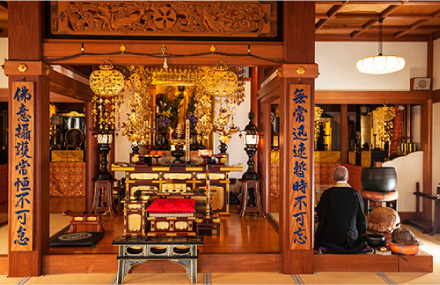

 横田丈実facebookページ
横田丈実facebookページ
